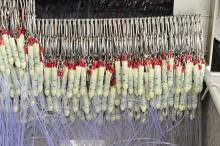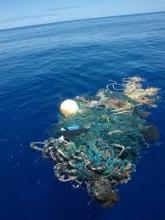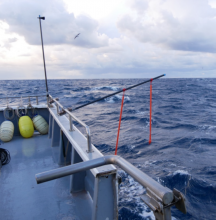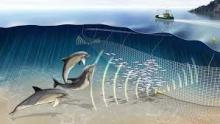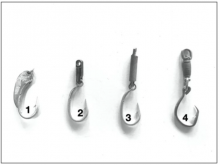Line weighting & bait sink rate
Longlines are weighted to get baited hooks rapidly out of the range of feeding seabirds. Line weighting is a primary mitigation measure and a key component in all successful reductions in seabird bycatch in pelagic longline fisheries. Line weighting should be used in conjunction with streamer lines and night-setting.
